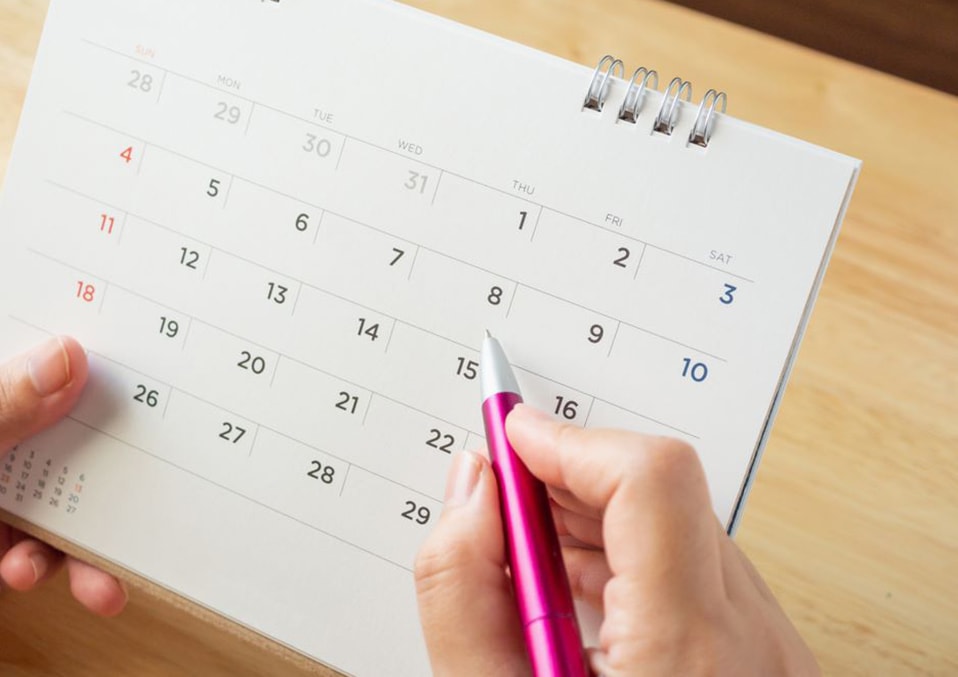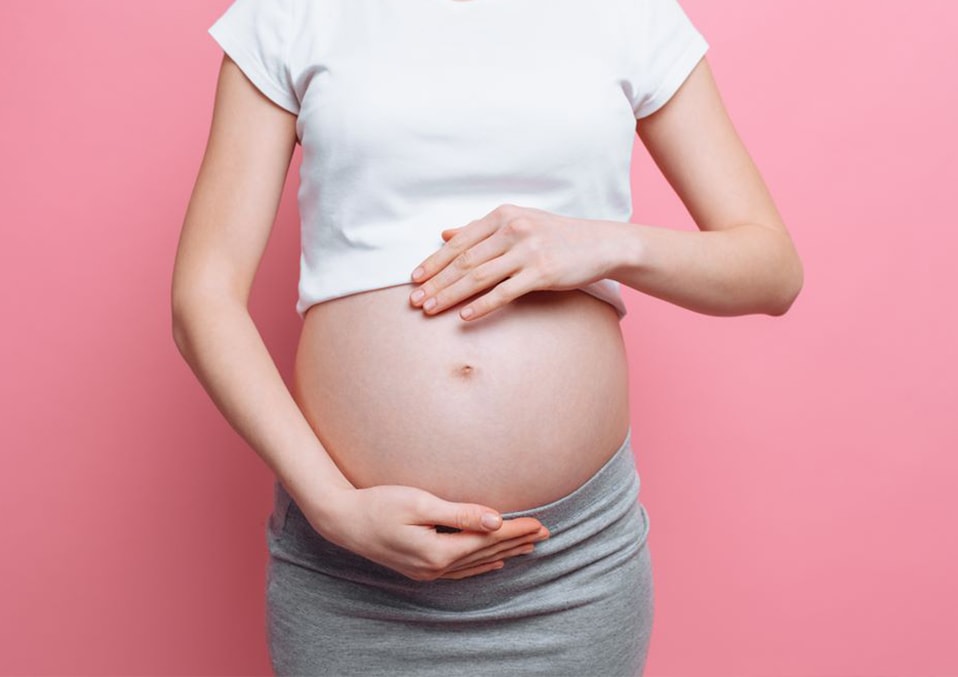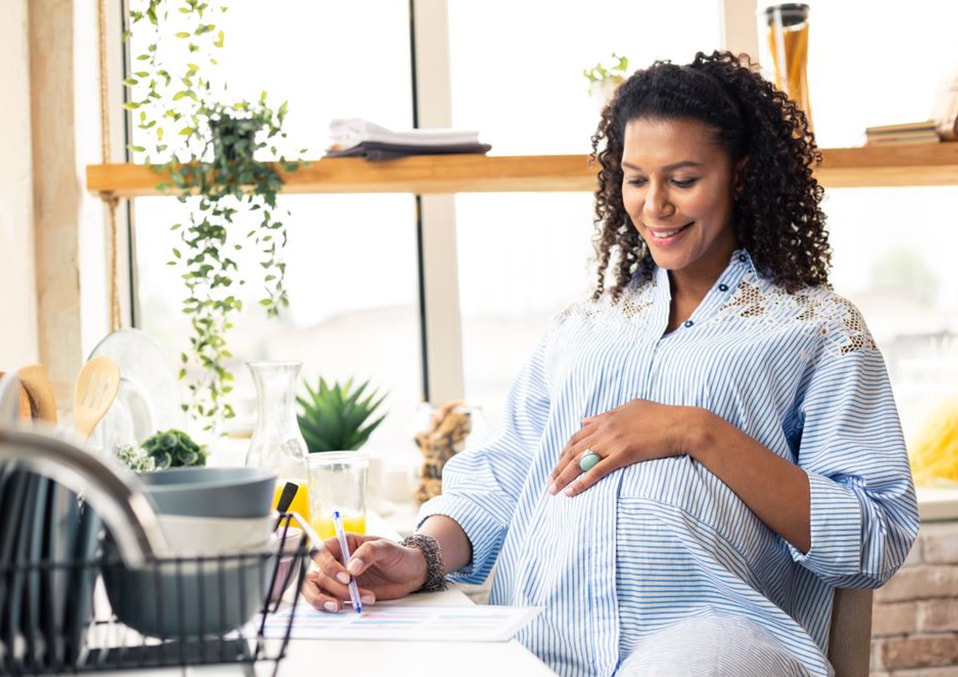Congratulations! You are about to bring a new life into the world in just a couple of months. It can be overwhelming for some parents but this is an incredible journey. That is why a complete pregnancy calendar will help you with what you need to know as well as what you should expect every week and month of the pregnancy.
Pregnancy calculator
 This calendar will only serve as a guide. Every pregnancy is different so all the details and information provided may or may not be accurate for you.
This calendar will only serve as a guide. Every pregnancy is different so all the details and information provided may or may not be accurate for you.
Cycle and ovulation
It will all start with a pregnancy calculator, where you can indicate your menstrual cycle as well as your days of ovulation. Every woman’s cycle is different, especially if they have irregular periods. A regular cycle has 28-32 days and the ovulation usually takes place between that period. Ovulation only lasts for 12-24 hours, which means that is the time when an egg is ready for fertilization. If you want to track your ovulation, you can consult your doctor to help you out.
The pregnancy calculator will ask when your last period was since pregnancy can occur if intercourse happened during your period. This is despite the fact that ovulation cannot happen while you are in the midst of your menstrual cycle. If you are having symptoms of pregnancy, it is best to take a pregnancy test and immediately consult your doctor.
Read Also:
First trimester
 The first trimester can be quite difficult for some women. This is the time when the body will react to some changes. There are some women who simply glow during this trimester, there are also some who can be sick a lot.
The first trimester can be quite difficult for some women. This is the time when the body will react to some changes. There are some women who simply glow during this trimester, there are also some who can be sick a lot.
Changes in the body
A woman might have spotting, or slight bleeding when they are in their first trimester. This usually means that the embryo that has been fertilized successfully managed to plant itself to the uterus. Women in their first trimester are prone to miscarriages or ectopic pregnancy.
Sore and tender breasts can also be experienced during this stage. It is triggered by high levels of hormones. It is a sign that your body is automatically preparing your milk ducts.
Read Also:
Baby’s growth: 1-3 months
 The entire first trimester lasts for 12 weeks or 3 months.
The entire first trimester lasts for 12 weeks or 3 months.
During the first month, the placenta will start to develop. It is the flat round organ that lets the fetus get all the nutrients it can get. The eyes, along with the mouth, jaw, and throat, also develop during the first month. Your baby will be the size of a grain of rice at this point, which is ¼ inch long.
Your baby is now in its second month, tiny buds will now grow as arms and legs. It is also during this time when the spinal cord and the other parts of the nervous system are formed.
Once you are three months pregnant, the baby will now have hands, toes, fingers, arms, and legs. The nails and ears also begin to develop. Your baby is now 3-4 inches long.
Second trimester
Changes in the body:
The second trimester brings more excitement. A small bump can now be felt since your baby is growing. This is also the time when you can ask for an ultrasound to see how well the baby is doing, together with the heartbeat.
Cravings and mood swings will also begin at this point. Experts recommend that every expecting mother should eat as healthy as possible. It is also suggested that pregnant women must stay active. Doing light exercises can help the body be prepared for labor and delivery.
Baby’s growth: 4-6 months:
The entire first trimester lasts for 28 weeks or 6 months.
During the fourth month, your baby’s nervous system is beginning to function. All the fingers, toes, and eyelids. This is why the baby can now move and suck his or her thumb. He or she is now about 6 inches long.
The baby’s gender can now be seen via ultrasound during the fifth month. The teeth and bones are becoming denser, while the hair is starting to grow. Most of the muscles are formed so a kick from can now be felt by the mother.
In the sixth month, the eyelids are starting to open. Some babies are born at this stage, but they must be put in the NICU or the neonatal intensive care unit for about a month.
Third trimester

This is the final part of your pregnancy calendar and your new bundle of joy is almost here.
Changes in the body
Your baby continues to grow and so does your belly. This is the stage where you might start to feel some back pain due to the additional weight from the baby, standing and walking for a long period of time can be painful as well.
Mild contractions or what they refer to as Braxton Hicks can also be experienced in the last few weeks of pregnancy. These contractions become stronger the closer your due date gets.
Anticipation also grows at this point in time, so the expectant mother may feel anxious
Baby’s growth: 7-9 months
The entire first trimester lasts for 40 weeks or 9 months.
At seven months, your baby can now recognize your own voice. Which is why experts suggest that soft music and talking to your baby softly is ideal.
Your baby now has fats in their body at eight months, so eating healthy foods may keep the fats at bay. If your baby becomes very big, you might find it difficult to have a normal delivery.
During the final month, your baby will now change his or her position and will drop down to your pelvis.
Your pregnancy calendar will indicate the due date of your baby. If after a week or two and your baby is still not ready to come out, your doctor will prepare you for cesarean delivery. The placenta that is connected to you and your baby will no longer function the way it used to, so the amount of oxygen your baby gets may not be enough.
Read Also:
- A Guide To The Rare Cases of Cryptic Pregnancies
- Your Ultimate Guide For Your Kids Finance Knowledge
- A Brief Look At Indiana Parenting Time Guidelines


